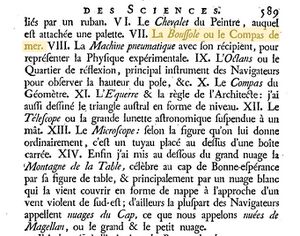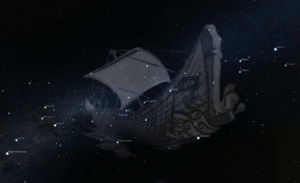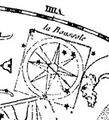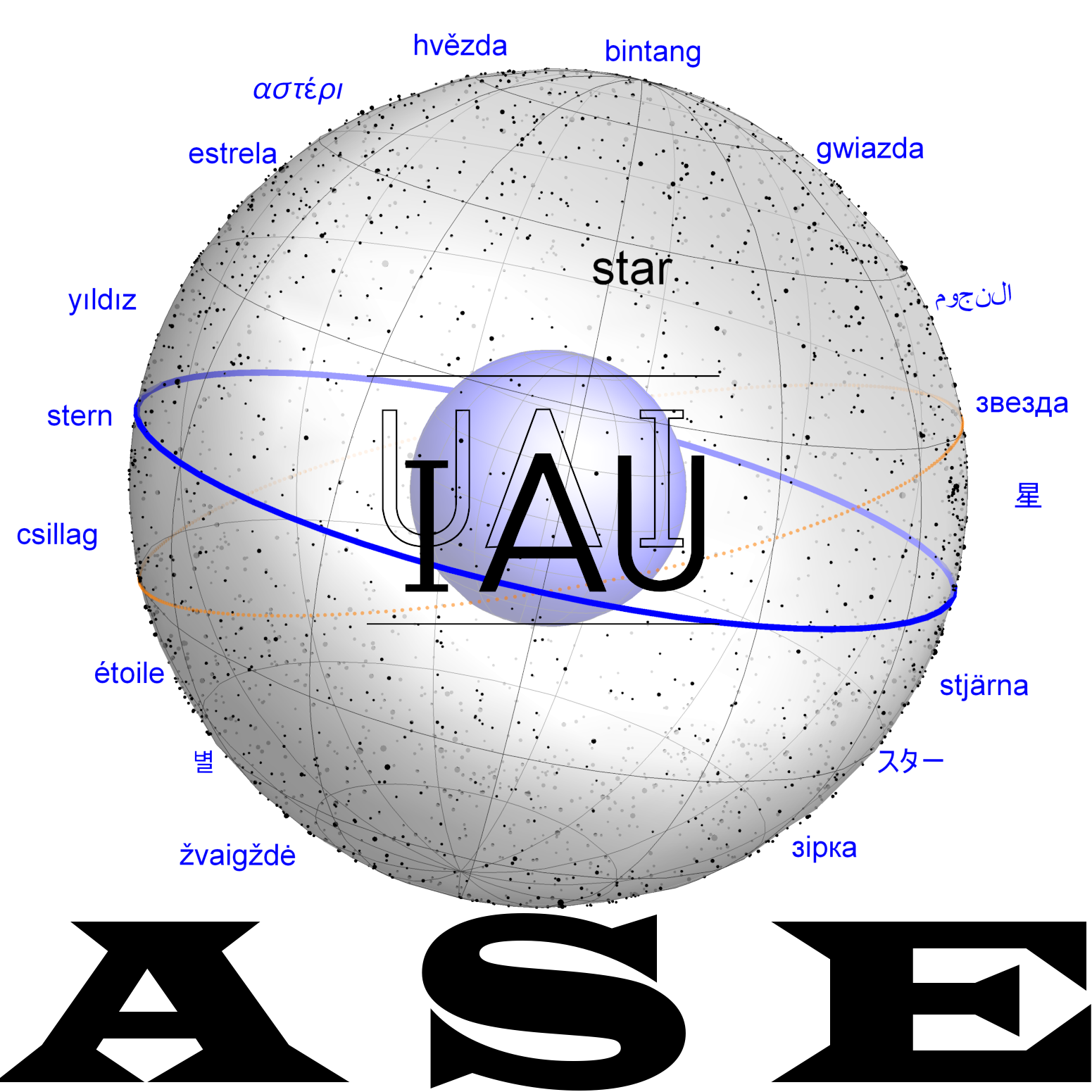Pyxis: Difference between revisions
(pyxis page created) Tags: Visual edit Disambiguation links |
No edit summary |
||
| (6 intermediate revisions by the same user not shown) | |||
| Line 6: | Line 6: | ||
The Greek constellation of Argo was imagined only in the northern stars of today's The Ship (Pup, Car). |
The Greek constellation of Argo was imagined only in the northern stars of today's The Ship (Pup, Car). |
||
Lacaille gives no reason or explanation for the invention of this constellation. The position of a compass between the top of the poop deck and the sails of a ship does not really make sense, but the three stars that form a straight line and were originally considered the mast of the ancient Greek Argo, could easily interpreted as a needle like in a mariner's compass. |
|||
===Origin of Constellation=== |
===Origin of Constellation=== |
||
==== Almagest ==== |
|||
[[File:Argo over time (smh 2024).gif|alt=animated GIF for Argo|thumb|animated GIF of the transformation of the constellation Argo over the course of the centuries from ancient Greek to modern depictions (map: Stellarium) ]] |
|||
The constellation is a modern invention, but the stars of Pyxis were mentioned in the Almagest, there defining the mast of the ship [[Argo]]. |
|||
{| class="wikitable" |
|||
! |
|||
! |
|||
! |
|||
! |
|||
|- |
|||
!No. |
|||
!Greek |
|||
(Heiberg 1898) |
|||
!English translation |
|||
(Toomer 1984) |
|||
!ident. |
|||
|- |
|||
! |
|||
!Ἀργοῦς ἀστερισμός. |
|||
!Argo (Almagest) |
|||
! |
|||
|- |
|||
|27 |
|||
|τῶν ἐν μέσῳ τῷ ἱστῷ β ὁ νότιος |
|||
|The southernmost of the 2 stars in the middle of the mast |
|||
|bet Pyx |
|||
|- |
|||
|28 |
|||
|ὁ βορειότερος αὐτῶν. |
|||
|The northernmost of them |
|||
|alf Pyx |
|||
|- |
|||
|29 |
|||
|τῶν πρὸς τῷ ἄκρῳ τοῦ ἱστοῦ β ὁ προηγούμενος. |
|||
|The more advanced of the 2 stars by the tip of the mast |
|||
|gam Pyx |
|||
|- |
|||
|30 |
|||
|ὁ ἐπόμενος αὐτῶν |
|||
|The rearmost of them |
|||
|del Pyx |
|||
|} |
|||
===Transfer and Transformation of the Constellation=== |
===Transfer and Transformation of the Constellation=== |
||
<gallery> |
<gallery> |
||
File:Argo almagest.jpg|Argo in the Almagest (137 CE), the stars of Pyxis form the mast of the ship. |
|||
File:Pyxis lacaille1756.JPG|Pyxis in the first map by Lacaille (1756) |
|||
File:Pyx Bode1782 detail.jpg|Pyxis in Bode (1782) |
|||
File:Pyx Fortin1795.jpg|Pyxis in Fortin's Atlas Céleste, 3rd edition (1795). |
|||
File:Arg+Pyx Bode1782 hi.jpg|Argo and Pyxis in Bode (1782) |
File:Arg+Pyx Bode1782 hi.jpg|Argo and Pyxis in Bode (1782) |
||
File:Argo+Pyx Goldbach1799 hi.jpg|Argo and Pyxis in Goldbach (1799) |
File:Argo+Pyx Goldbach1799 hi.jpg|Argo and Pyxis in Goldbach (1799) |
||
| Line 32: | Line 78: | ||
[[Category:Modern]] |
[[Category:Modern]] |
||
[[Category:88 IAU-Constellations]] |
[[Category:88 IAU-Constellations]] |
||
[[Category:Arg]] |
|||
Latest revision as of 19:13, 26 April 2025
One of the 88 IAU constellations. The stars of Pyxis formed the mast of Ptolemy's Argo, but have been separated from The Ship when the Dutch enlarged this constellation image in the 1590. Lacaille formed a new constellation with them in the 1750s.
Etymology and History
The Greek constellation of Argo was imagined only in the northern stars of today's The Ship (Pup, Car).
Lacaille gives no reason or explanation for the invention of this constellation. The position of a compass between the top of the poop deck and the sails of a ship does not really make sense, but the three stars that form a straight line and were originally considered the mast of the ancient Greek Argo, could easily interpreted as a needle like in a mariner's compass.
Origin of Constellation
Almagest
The constellation is a modern invention, but the stars of Pyxis were mentioned in the Almagest, there defining the mast of the ship Argo.
| No. | Greek
(Heiberg 1898) |
English translation
(Toomer 1984) |
ident. |
|---|---|---|---|
| Ἀργοῦς ἀστερισμός. | Argo (Almagest) | ||
| 27 | τῶν ἐν μέσῳ τῷ ἱστῷ β ὁ νότιος | The southernmost of the 2 stars in the middle of the mast | bet Pyx |
| 28 | ὁ βορειότερος αὐτῶν. | The northernmost of them | alf Pyx |
| 29 | τῶν πρὸς τῷ ἄκρῳ τοῦ ἱστοῦ β ὁ προηγούμενος. | The more advanced of the 2 stars by the tip of the mast | gam Pyx |
| 30 | ὁ ἐπόμενος αὐτῶν | The rearmost of them | del Pyx |













